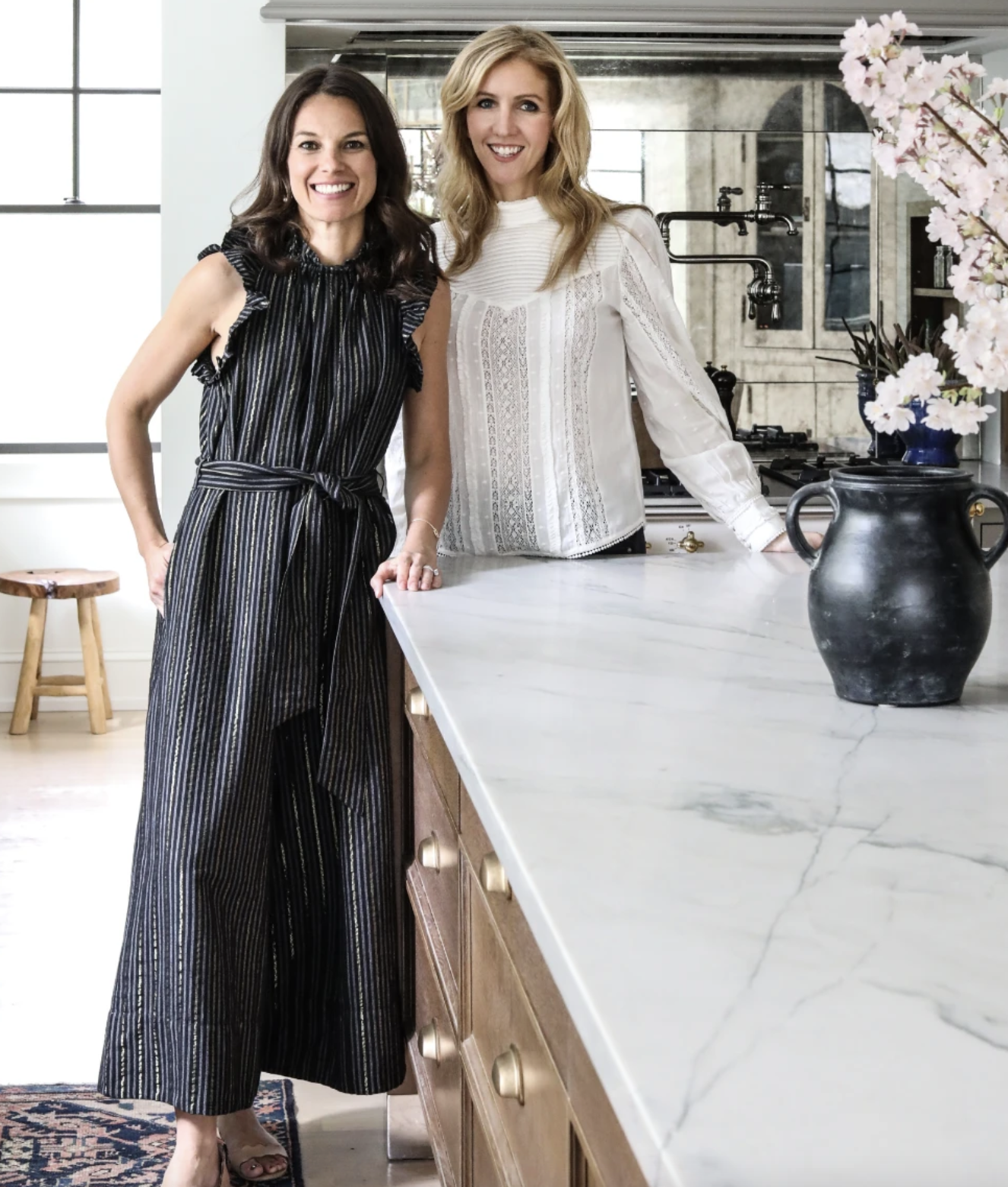The Glen Ellyn, Illinois–based design duo Renee DiSanto and Christina Samatas initially crossed paths at a serendipitous time in their careers. Samatas had recently transitioned into design after first pursuing PR and marketing. She’d gone back to school and even secured a position at a local design firm, but as a mother of three, she wanted more flexibility to spend time with family, so she started from scratch on a few projects of her own. DiSanto, meanwhile, had been managing several different creative endeavors—from graphic design and painting to baking cakes—and was occupied with photography and blogging at the time.
After DiSanto approached Samatas about doing an interior design post on her blog, the pair quickly realized they worked well together as a creative team. DiSanto offered to photograph some of Samatas’s work, and pretty soon the two were collaborating on design projects and trading potential business ideas.
“She called me one day and said, ‘What do you think about the name Park & Oak?’—because she was living on Park, and I was living on Oak. I was like, ‘That’s perfect. Let’s do one project and see where it goes, and maybe in a few years we’ll have more clients and a studio,’” DiSanto tells host Kaitlin Petersen on the latest episode of Business of Home’s new podcast, Trade Tales. “But what happened was, we started taking pictures and posting them on Instagram, and everything happened really quickly after that.”
Back in 2014, the social media site wasn’t yet classified as the accelerating force for culture and commerce it is today. But what began as a tentative project took off quickly, and prospective clients began reaching out to the duo to inquire about their services. Within six months, they were able to open their own studio space.
Despite their quick rise to success, DiSanto and Samatas haven’t faced a shortage of challenges—including an accounting mishap that turned an early client into an internet troll, which was enough to make the budding designers question their endeavor. Instead of admitting defeat, they became committed to refining their process with each new experience.
“Any business always has ups and downs, but the beginning of a new business—especially when you’ve not been in this industry—is always interesting,” says Samatas. “Without each other’s support, I think we both would have given up at one point in time.”
Listen to the episode and check out some of the takeaways below. If you like what you hear, subscribe on Apple Podcasts or Spotify. This episode was sponsored by Universal Furniture and Mitchell Gold + Bob Williams.
Beware of trolls
In the early stages of building their business, DiSanto and Samatas wore every hat when it came to operations. While working with one of their very first clients, the duo made a minor billing mistake in recording the tax on an item. They quickly offered to remedy the situation, but the small error was enough to send the client into a tailspin, and she publicly flamed Park & Oak on every online moms group, garage sale site and social platform she could find. Thankfully, the pair’s follower base rallied around them, and the designers made it through the fire with a resolution to tighten up their process and bring on their first hire: someone to handle the numbers. “Everything needs to be very buttoned up. It’s so important to make sure that the process is set up and you don’t make those kinds of mistakes—as insignificant as it was, there’s no room for errors,” says Samatas. “That’s when we started to get really smart about our process. … Before, it was more fun and creative, and then we realized we had to think like businesswomen or this wasn’t going to work.”
Good things come in threes
As their business grew, they wanted to have a hand in every project, even while scaling up their firm to take on more clients. They eventually arrived at a happy medium by organizing their now 18-person workforce into teams of three on every project—one project manager, one project assistant, and either DiSanto or Samatas. This way, clients always receive the duo’s creative oversight, in addition to the daily communication and organization provided by the project manager. Plus, the Park & Oak team keeps things fresh by working in different configurations with each new client. “It just became more structured—everybody knew what to expect, they knew what their roles were,” says DeSanto. “It’s been helpful to me and Christina. Before, we were the ones training everybody we would hire, and now with this, any design assistant that we’re hiring, our designers are training and teaching them. It’s become a very collaborative environment.”
Avoiding genie-in-a-bottle syndrome
After initially charging a flat rate, the designers learned quickly that their time was no longer their own—in short, as DiSanto puts it, “We were owned.” They switched to an hourly structure to keep burnout at bay and place a greater premium on their talent and services. “In regards to the client, I think it almost forced them to be able to make a decision between option one or option two, and not ask for option three, four, five … and go back to option one at the very end of it,” says DiSanto. “Now they’re more considerate not only of our time, but also of their money that’s being spent for all of these options.”
Homepage image: Christina Samatas and Renee DiSanto | Courtesy of Park & Oak




























